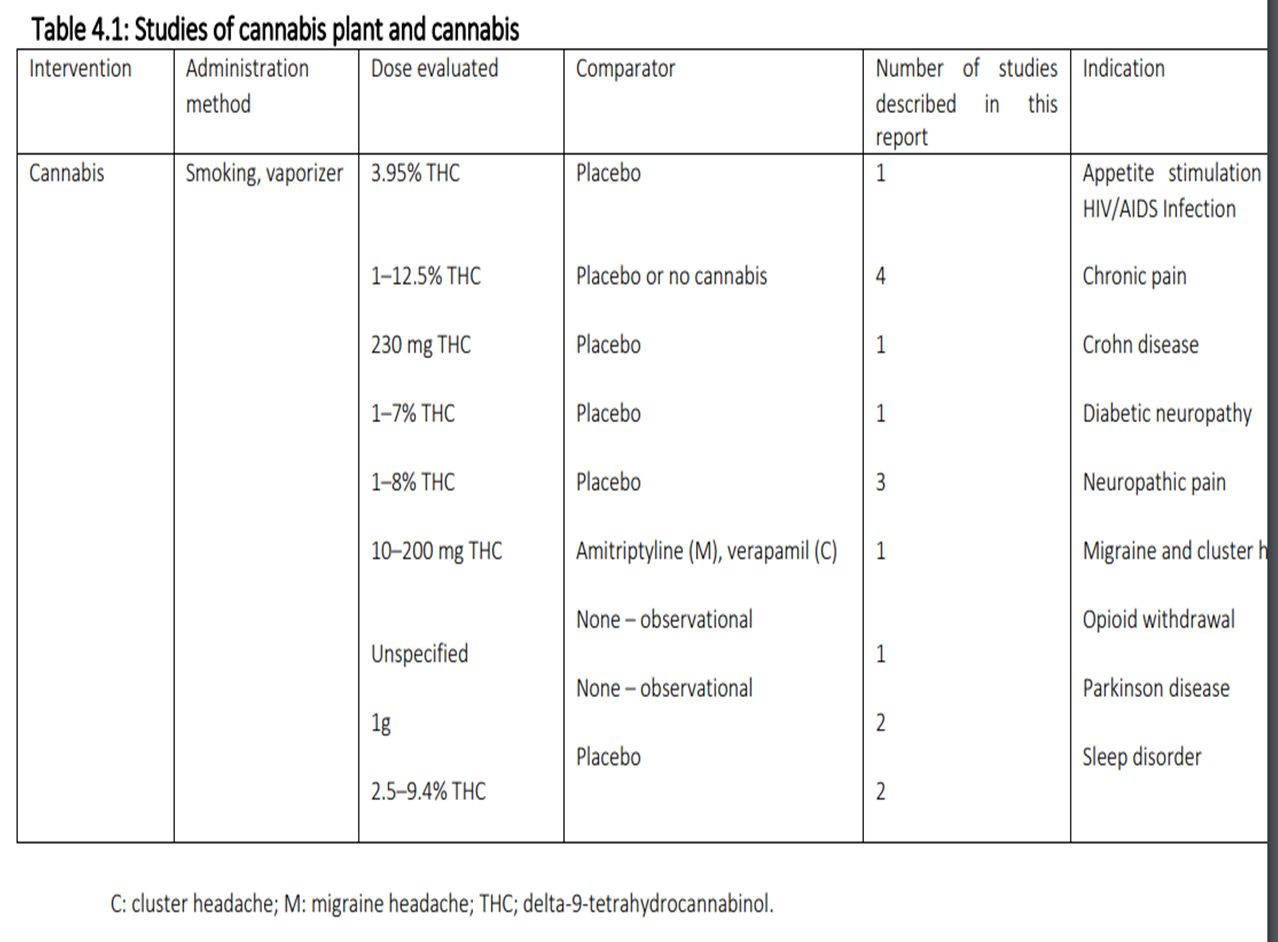Cannabis plant and cannabis resin, WHO Expert Committee on Drug Dependence Pre-Review
Extent of therapeutic use and epidemiology of medical use
It is estimated that between 3% and 5% of the world’s population has tried cannabis for nonmedical reasons. Among users of medicinal cannabis, an international survey of 953 participants from 31 countries found that most were current users under the care of a health professional and had been using cannabis-based medications for several years. Most had experience with herbal products (administered by smoking) before the onset of their medical conditions, or after onset but prior to a physician’s recommendation for cannabis therapy. The survey found that the five medical conditions for which cannabinoids were most often used as treatment were back pain, sleep disorders, depression, post-injury pain and multiple sclerosis. A literature review on cannabis use recommended by physicians reported a prevalence ranging from < 1.7% among Israeli cancer patients to 17.4% in the USA for a range of conditions, pain being the most common. Among those who reported self-medicating, a range from 15% in Canadian patients with chronic pain to 30% in British patients with multiple sclerosis was noted. Pain, sleep disturbances and anxiety were the most common reasons given for cannabis use. Two studies have noted that there are no significant demographic differences between adults who use medicinal cannabis and those who use cannabis recreationally, although in an adjusted analysis one study found that medicinal cannabis users had higher daily cannabis use, were more likely to be in poorer health, and had lower levels of both alcohol use disorders and non-cannabis drug use.
Effectiveness of therapeutic use

- ISSUP members can join Networks to comment – Sign in or become a member